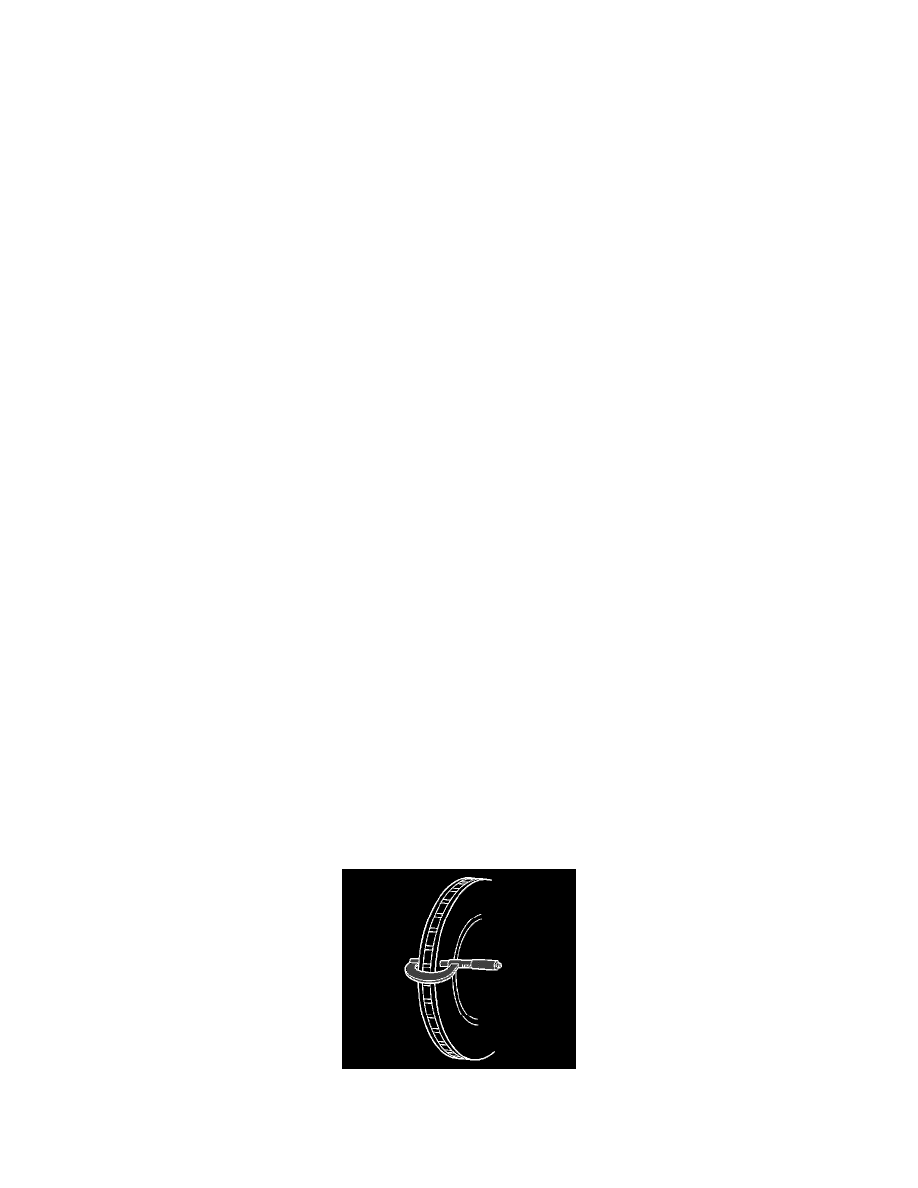Savana 4500 V8-6.6L DSL Turbo (2009)

2. Rotate the rotor until the highest reading is displayed on the dial.
3. Mark the location of the high spot relative to the nearest wheel stud, or studs.
4. Measure and record the amount of LRO.
12. Compare the brake rotor assembled LRO to the following specifications:
Brake rotor maximum allowable assembled lateral runout: 0.13 mm (0.005 in)
13. If the brake rotor assembled LRO is within specifications, proceed to step 18.
If the brake rotor assembled LRO exceeds the specification, refinish the rotor to ensure true parallelism, refer to Brake Rotor Refinishing (See:
Service and Repair/Procedures). After refinishing the rotor, proceed to step 14.
14. Mount a dial indicator, J-45101 - Hub and Wheel Runout Gage , or equivalent, to the steering knuckle and position the indicator button so it
contacts the brake rotor friction surface at a 90 degree angle, approximately 13 mm (0.5 in) from the outer edge of the rotor.
15. Measure and record the assembled LRO of the brake rotor.
1. Rotate the rotor until the lowest reading is displayed on the indicator dial, then set the dial to zero.
2. Rotate the rotor until the highest reading is displayed on the dial.
3. Mark the location of the high spot relative to the nearest wheel stud, or studs.
4. Measure and record the amount of LRO.
16. Compare the brake rotor assembled LRO to the following specifications:
Brake rotor maximum allowable assembled lateral runout: 0.13 mm (0.005 in)
17. If the brake rotor assembled LRO measurement exceeds the specification, bring the LRO to within specifications. Refer to Brake Rotor Assembled
Lateral Runout Correction (See: Brake Rotor Assembled Lateral Runout Correction).
18. If the brake rotor assembled LRO measurement is within specification, install the brake caliper and depress the brake pedal several times to secure
the rotor in place before removing the J-45101-100 - Conical Brake Rotor Washers and the lug nuts.
Brake Rotor Surface and Wear Inspection
Brake Rotor Surface and Wear Inspection
Special Tools
J 8001 Dial Indicator set, or equivalent
Warning: Refer to Brake Dust Warning (See: Service Precautions/Technician Safety Information/Brake Dust Warning).
1. With the tire and wheel assemblies removed and the brake rotors retained by wheel lug nuts, clean the braking/friction surfaces of the brake rotor
with denatured alcohol or an equivalent approved brake cleaner.
2. Inspect the braking surfaces of the brake rotor for the following braking surface conditions:
*
Heavy rust and/or pitting
Light surface rust can be removed with an abrasive disc; heavy surface rust and/or pitting must be removed by refinishing the rotor.
*
Cracks and/or heat spots
*
Excessive blueing discoloration
3. If the braking surfaces of the brake rotor exhibits one or more of the braking surface conditions, the rotor requires refinishing or replacement.
4. Using a calibrated micrometer measure and record the thickness variation of the brake rotor at 4 or more points around the brake rotor.
Ensure that the measurements are only taken within the brake pad lining contact area and that the micrometer is positioned the same distance from
the outside edge of the rotor for each measurement.
